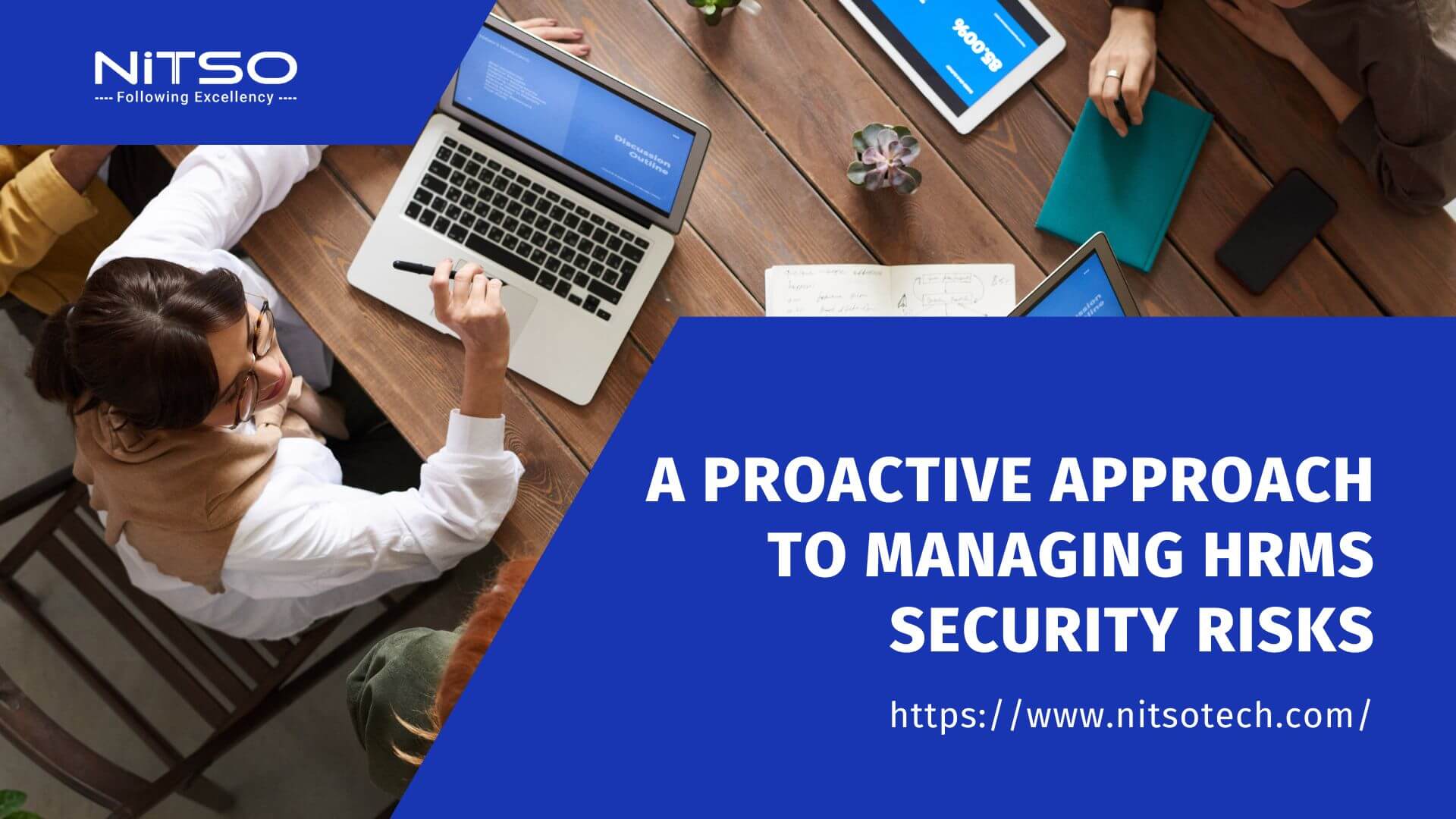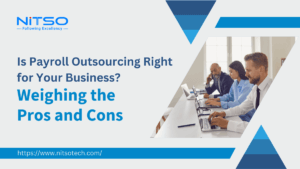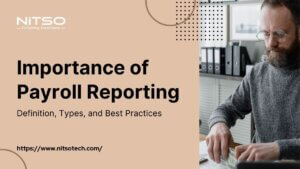An HRMS (human resource management system) is a critical software system used by organizations to manage key aspects of their workforce including employee records, payroll, benefits administration, compliance, and recruitment. As organizations become more reliant on HRMS platforms, HRMS security has become a major concern due to the sensitive employee data these systems contain. Recent years have seen a rise in cyber attacks targeting HRMS systems, leading to data breaches that expose confidential employee information. This article will discuss the importance of securing HRMS platforms and provide best practices for organizations to protect their HR data and systems.
Table of Contents
Why HRMS Security is Crucial?
HRMS platforms contain highly sensitive and confidential employee data including personally identifiable information (PII) like social security numbers, bank account details, medical/health information, and performance records. A breach of HRMS can expose this data putting employees at risk of identity theft and financial fraud.
Additionally, compromised payroll data can lead to direct financial losses and disruption of salary payments for the organization. Manipulation of employee attendance records and leave data can also lead to administrative issues.
An unsecured HRMS provides hackers access to the entire employee directory which can be used for conducting targeted phishing and social engineering attacks on the organization.
Weak HRMS security can also lead to regulatory non-compliance and legal consequences if sensitive employee data gets compromised such as during a cyber attack. Data protection and privacy laws like GDPR impose heavy fines for organizations that fail to protect employee information.
That’s why securing HRMS with strong authentication, access controls, audits, and data encryption is critical for safeguarding employee records and maintaining the continuity of HR operations.
6 Common HRMS Security Threats
HRMS face both external and internal security threats that can lead to data breaches and misuse of employee information.
- Phishing attacks target HR staff with emails containing malware links or attachments that when opened, allow hackers access into the HRMS network. Social engineering is used to make these emails appear legitimate.
- Using stolen or weak passwords is one of the top vulnerabilities exploited by attackers to gain unauthorized access to HRMS platforms. Default or easy-to-guess passwords make it easy for hackers.
- Unpatched or outdated HRMS software often contains security loopholes and vulnerabilities that can be leveraged by hackers if regular system updates and patches are not applied.
- Insider threats from disgruntled or negligent employees who abuse their access to sensitive HR data are a top concern. Employees may steal data for personal gain or unintentionally expose it due to a lack of security awareness.
- Third-party risks arise when vendor systems that integrate with HRMS are not secured, making the entire ecosystem vulnerable. Vendor access needs monitoring.
- Malware infections can occur causing loss of data or disruption of HR functions. Sources may include phishing, drive-by downloads, and unsecured devices.
7 Best Practices for Securing HRMS
With HRMS containing such sensitive employee data, organizations must take proactive steps to secure these systems from ever-evolving cyber threats. There are several best practices organizations should follow to secure their HRMS platforms:
1. Use strong passwords and multi-factor authentication
Firstly, strong user access controls and credentials are essential. Enforce the use of complex passwords that are at least 12 characters long and include upper/lower case letters, numbers, and symbols. Set up mandatory password rotation every 90 days. Enable multi-factor authentication (MFA) using biometrics or one-time codes as the second layer of verification after usernames/passwords.
2. Apply the latest security patches and updates
Secondly, maintain watertight software security. Apply the latest HRMS patches and updates as soon as they are released to ensure potential vulnerabilities are not exposed. Set up automated security update deployments for efficiency. Encrypt sensitive HR data fields like SSN, bank details, and health information. This renders stolen data unreadable.
3. Control access with role-based permissions
Also, implement the principle of least privilege access by giving employees and third parties role-based access permissions to only the HRMS modules and data they need. This limits insider risks and unintended data exposure.
4. Train employees on cybersecurity awareness
Furthermore, train employees extensively on cybersecurity awareness focusing on social engineering, phishing, password hygiene, and data handling. HRMS user mistakes often lead to breaches. Annual cybersecurity education can significantly bolster defences.
5. Perform regular audits and risk assessments
In addition, perform frequent audits and risk analysis on HRMS platforms to identify and resolve security gaps proactively. Conduct vulnerability scanning and penetration testing to find weaknesses before hackers do. Have an incident response plan ready so that data breaches can be quickly contained and mitigated when they do occur.
6. Backup and restore your data
Moreover, backup HRMS data regularly and test restores to ensure continuity of operations if systems are compromised. Store backups offline for recovery from ransomware.
7. Hire a professional
Finally, partner with experienced cybersecurity professionals to extend in-house capabilities. They can provide guidance on HRMS software hardening, 24/7 monitoring, and global threat intelligence.
Implementing a Comprehensive HRMS Security Strategy
While individual security measures are important, organizations need to implement a comprehensive, strategic approach to securing their HRMS holistically. This requires involvement from stakeholders across departments and executive leadership support.
- A cross-functional team including HR, IT, data security, and legal teams should be formed to devise the HRMS security strategy based on identified risks and priorities. The team defines policies, standards, technologies, training programs, and response plans that serve as the pillars of the strategy.
- Executive-level sponsorship provides the budget and visibility needed to implement the multi-year strategy successfully. The board and CEO need to recognize HRMS security as a business risk and support the programs financially and culturally.
- The strategy should take a long-term outlook with both prevention and response aspects. Necessary security tools and skills development should be funded adequately. Ongoing audits and risk monitoring provide visibility into maturing risks like insider threats or new regulations.
By taking a coordinated, organization-wide approach to HRMS security anchored by senior leadership commitment, companies can create a robust cyber risk management regime for their HR data assets.
Article you might be intrested in: Exploring the Pros and Cons of Outsourcing Payroll
Final Thoughts
As organizations become increasingly dependent on HRMS platforms, it is crucial that they implement robust security measures to protect these systems against continuously evolving cyber threats. Given the highly sensitive employee data within HRMS, the lack of adequate security puts companies at risk of major data breaches, financial losses, and reputational damage.
Some high-profile examples include the hacks of Oracle’s PeopleSoft HR system, CVS Health, and Morgan Stanley. These incidents highlight the need for robust HRMS security measures to safeguard these mission-critical systems against ever-evolving cyber threats.
While no system can be 100% secure, following cybersecurity best practices around access controls, software hardening, encryption, training, audits, and incident response can significantly minimize risks and safeguard HRMS environments. However, individual controls alone are not sufficient. Organizations need an integrated HRMS security strategy backed by management commitment to cover all bases.
By taking a proactive and strategic approach to securing their HRMS landscape, companies can develop resilience against internal and external threats. In today’s hyperconnected world, strong HRMS security needs to be a top priority for enterprises across industries.
FAQs
How do I protect my HRMS data?
You can protect HRMS data by implementing strong access controls like MFA, password policies, and role-based permissions. Encrypt sensitive data, apply security patches promptly, train employees on risks, perform audits, and have an incident response plan.
What security control can be implemented to secure an HRMS?
Top security controls for HRMS include multifactor authentication, data encryption, role-based access, security training for users, regular audits and penetration testing, and timely software updates and patching.
What are the security risks of HRMS?
Major HRMS security risks include phishing, weak passwords, unauthorized insider access, outdated/vulnerable software, malware infections, third-party risks, and lack of encryption allowing data theft.
What does HRMS stand for?
HRMS stands for Human Resource Management System. It is software used by organizations to manage employee data and key HR functions.
What are the benefits of HRMS?
Benefits of HRMS include efficient HR operations, easier talent management, enhanced data security, improved compliance, increased analytics capabilities, and better employee self-service.
What are the tools used to secure information systems?
Key tools are firewalls, anti-malware, VPNs, intrusion detection/prevention systems (IDS/IPS), encryption, multifactor authentication, vulnerability scanners, and endpoint security solutions.








0 Comments